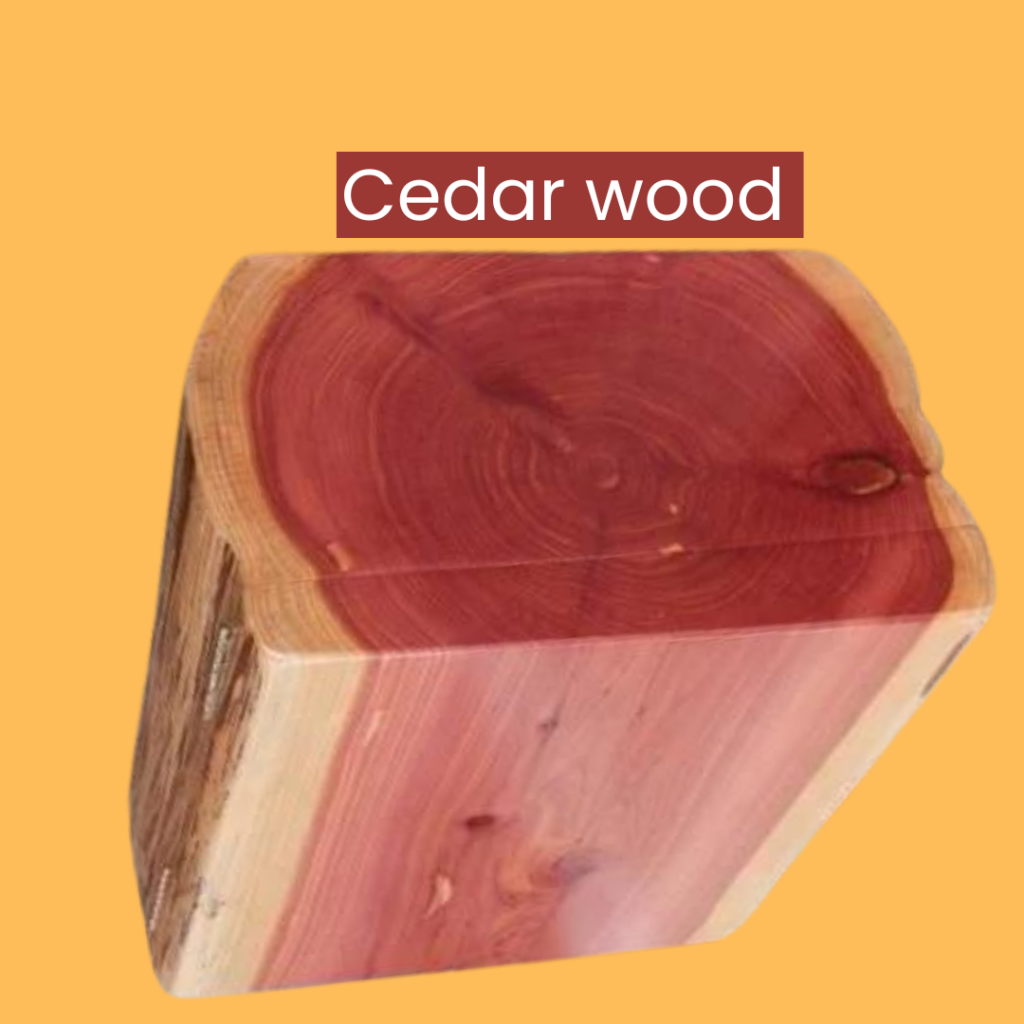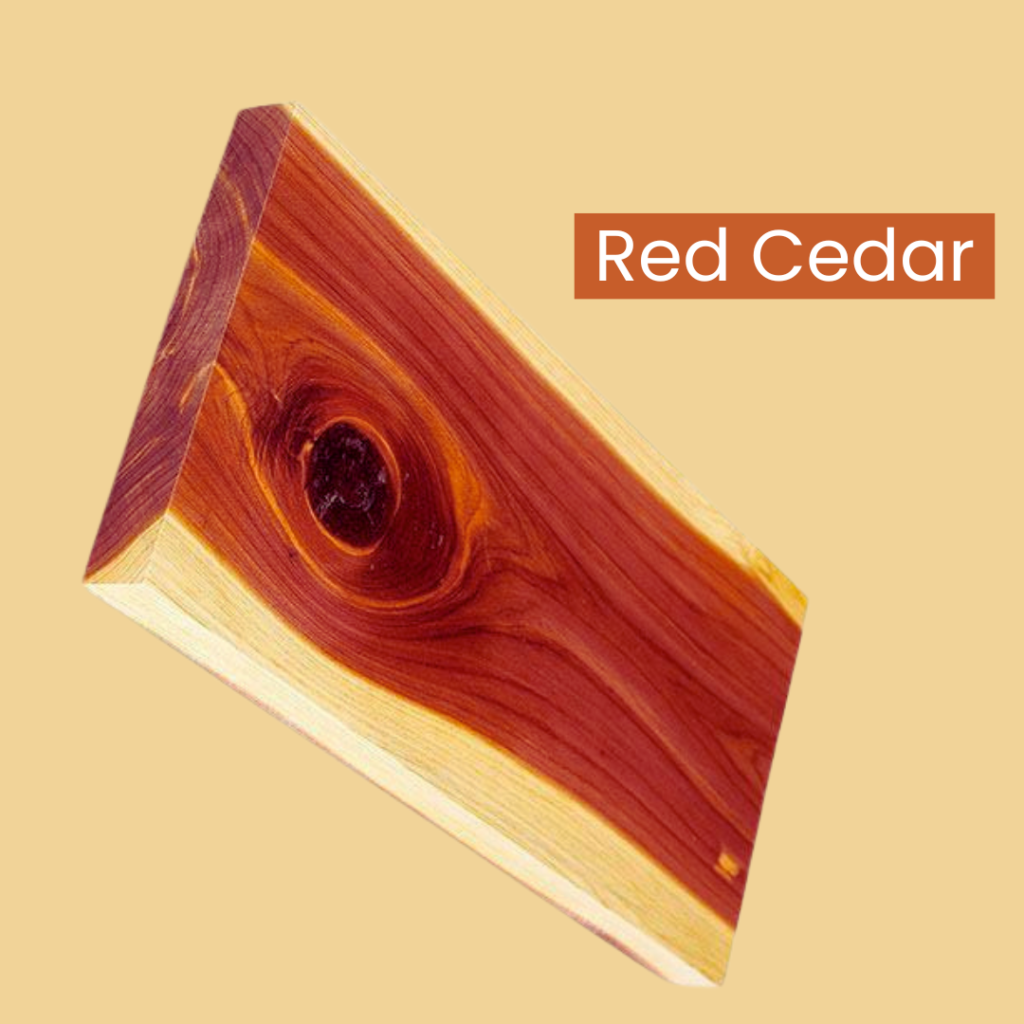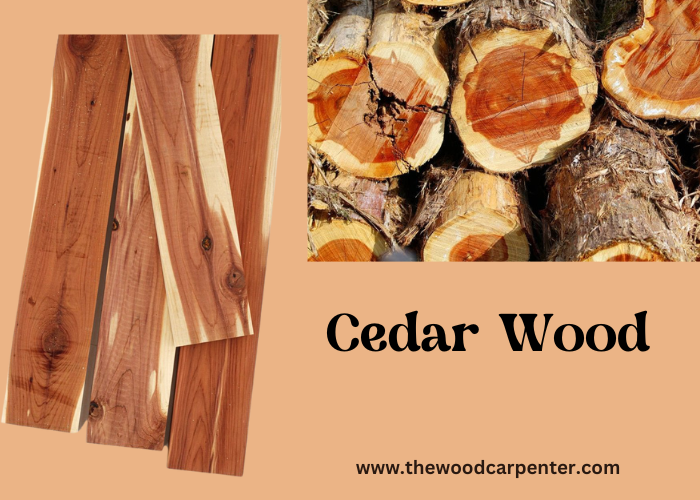Cedar Wood
Cedar wood is a type of wood that comes from the cedar tree, belonging to the genus Cedrus. There are several species of cedar trees, and they are commonly found in different parts of the world, including North America, Asia, and the Mediterranean region. Some well-known species of cedar include the Western Red Cedar (Thuja plicata), Eastern Red Cedar (Juniperus virginiana), and the true cedars from the Cedrus genus, such as the Atlas cedar (Cedrus atlantica) and the Lebanon cedar (Cedrus libani).
Cedar wood holds a special place in human history and culture, renowned for its durability, aromatic fragrance, and versatility. It has been utilized for centuries for various purposes, ranging from building construction to crafting intricate furniture. Let’s delve deeper into the world of cedar wood.
Why Choose Cedar Wood ?

Choosing cedar wood comes with a multitude of benefits, making it a popular and timeless choice for various applications. Whether you’re considering outdoor structures, indoor furniture, or simply looking for an aesthetically pleasing and durable material, cedar wood stands out for several reasons:
Natural Beauty: This wood is renowned for its natural beauty, characterized by a warm, reddish-brown color and a fine, straight grain. The wood’s appearance is versatile, making it suitable for a range of design styles from rustic to contemporary.
Aromatic Qualities: One of the distinctive features of this wood is its pleasant aroma. Natural oils within the wood act as an insect repellent, making cedar a preferred choice for closets, chests, and storage areas where it helps protect clothing and linens.
Durability: Cedar wood is naturally resistant to decay, insects, and fungal attacks. This inherent durability makes it an excellent choice for outdoor applications, such as fencing, decking, siding, and furniture. Cedar structures can withstand the elements, reducing the need for frequent maintenance.
Resistance to Decay and Pests: The natural oils present in this wood make it resistant to decay and pests. This resistance not only contributes to the wood’s longevity but also reduces the need for chemical treatments, making cedar an environmentally friendly option.
Outdoor Applications: Cedar wood excels in outdoor environments. It remains robust and weathers gracefully, making it an ideal choice for structures exposed to varying weather conditions. Whether used in gazebos, pergolas, or garden furniture, cedar enhances outdoor spaces with its charm and resilience.
Versatility: It’s versatility is evident in its ability to adapt to various applications. It is used for outdoor furniture, siding, shingles, decking, indoor paneling, and even culinary purposes. The wood’s adaptability makes it suitable for a wide range of projects and design preferences.
Low Maintenance: This wood requires minimal maintenance compared to some other types of wood. Its natural resistance to decay and pests means fewer treatments and coatings are needed to keep the wood in good condition, saving both time and resources.
Sustainability: Many cedar wood sources are sustainably managed, contributing to its appeal as an environmentally conscious choice. Responsible forestry practices ensure that cedar harvesting is done in a way that promotes the long-term health of forests.
Cultural and Historical Significance: Cedar wood has been used for centuries in various cultures for construction, tools, and ceremonial purposes. Its historical significance adds to its allure, connecting modern applications with age-old traditions.

Also read: Various Dark Wood Types
What Is Sheesham Wood? Everything You Should Know
Types of Cedar wood:
Alaskan Yellow Cedar: Alaskan Yellow Cedar (Cupressus nootkatensis) may be called cedar, but it’s actually a type of cypress. It boasts a pale yellow to light brown hue with a fine, consistent grain. Known for its remarkable strength and natural durability, this cedar wood is prized for outdoor applications such as decking, boat construction, and exterior structures, particularly in areas with tough weather conditions.
Western Red Cedar: Western Red Cedar (Thuja plicata) is a highly favored and extensively employed cedar wood. It showcases a vibrant reddish-brown shade, sometimes featuring subtle touches of pink and purple. This cedar variety is well-known for its remarkable natural durability and resistance to rot, making it perfect for outdoor uses such as siding, decking, and fencing. Beyond its practical benefits, Western Red Cedar is appreciated for its appealing look and delightful aroma.
Eastern Red Cedar: Eastern Red Cedaror Aromatic Red Cedar, has a cozy reddish-brown to rich red color and a unique sweet smell. This kind of cedar is smaller and is commonly used inside homes for things like lining closets, making chests, and doing crafts. The wood of the Eastern Red Cedar is really good at not getting damaged by rot, so people often use it for making outdoor furniture and small projects outside.
Spanish Cedar: Spanish Cedar (Cedrela odorata): Spanish Cedar, also known as Cigar Box Cedar, isn’t a real cedar but is part of the Meliaceae family. It has a reddish-brown color with a golden shine and a nice cedar-like smell. Spanish Cedar is great to work with, and it’s resistant to insects and decay, which makes it a hit for places with humidity and bugs. People often use it for things like interior millwork, cabinetry, and crafting cigar boxes.
Port Orford Cedar (Chamaecyparis lawsoniana): Port Orford Cedar, native to the Pacific Northwest, showcases a pale yellow to light brown color with a fine, uniform texture. This cedar type is renowned for its remarkable strength-to-weight ratio, making it perfect for applications demanding high structural integrity. Common uses include boat building, exterior construction, and specialty joinery.
Atlantic White Cedar (Chamaecyparis thyoides): Found in the eastern United States, Atlantic White Cedar presents a pale yellow to light brown hue with a fine, straight grain. This cedar variety is highly valued for its outstanding resistance to rot, making it a top choice for outdoor projects like decking, fencing, and boatbuilding.
Also read: Balsa Wood: Unveiling Its Remarkable Strength
Hinoki Wood: Exploring the Beauty and Benefits
FAQ
1. Is cedar a hard wood ?
No, cedar is typically classified as a softwood.
2. Can I paint cedar wood, or is staining a better option?
Both painting and staining are viable options for cedar wood. However, staining is often preferred if you want to preserve the natural appearance of the wood while providing protection. Proper surface preparation is crucial for successful paint or stain application.
3. Does cedar wood require regular maintenance?
Cedar wood generally requires less maintenance than some other woods. However, occasional cleaning and resealing or restaining may be necessary, especially for outdoor applications.
4. Can cedar wood be used for fencing?
Cedar is widely used for fencing due to its durability, resistance to insects, and ability to withstand weather conditions. It can be left natural, stained, or painted according to preference.

